Ask Ethan # 37: Earth's motion relative to the galaxy
There is no such thing in life as the eternal peace of mind. Life itself is movement, and cannot exist without desires, fear, and feelings.
Thomas Hobbs
The reader asks:
I found on YouTube a video about the theory of the spiral motion of the solar system through our galaxy. It did not seem convincing to me, but I would like to hear it from you. Is it scientifically correct?
First, let's see the video itself:
Some of the statements in this video are correct. For example:
- the planets revolve around the sun in approximately the same plane
- The solar system moves through the galaxy with an angle of 60 ° between the galactic plane and the plane of rotation of the planets
- The sun, during its rotation around the Milky Way, moves up and down and in and out relative to the rest of the galaxy.
')
All this is true, but at the same time in the video all these facts are shown incorrectly.

It is known that the planets move around the sun in ellipses, according to the laws of Kepler, Newton and Einstein. But the picture on the left is wrong in terms of scale. It is irregular in terms of shape, size, and eccentricities. And although on the diagram to the right the orbits are less similar to ellipses, the orbits of the planets look something like this in terms of scales.
Take another example - the orbit of the moon.

It is known that the moon revolves around the earth with a period of just under a month, and the earth revolves around the sun with a period of 12 months. Which of the pictures presented best demonstrates the movement of the moon around the sun? If we compare the distances from the Sun to the Earth and from the Earth to the Moon, as well as the rotation speed of the Moon around the Earth, and the Earth / Moon system around the Sun, it turns out that the situation is best demonstrated by option D. You can exaggerate them to achieve some effects , but to quantify options A, B, and C are incorrect.
We now turn to the movement of the solar system through the galaxy.
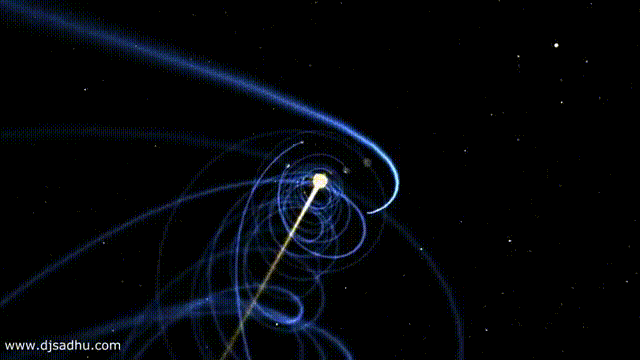
How many inaccuracies it contains First, all the planets are at one time in one plane. There is no lag, which the more distant planets from the Sun would demonstrate in relation to the less distant ones.
Secondly, let's remember the real speeds of the planets. Mercury moves faster than everyone else in our system, rotating around the Sun at a speed of 47 km / s. This is 60% faster than the orbital velocity of the Earth, about 4 times faster than Jupiter, and 9 times faster than Neptune, which moves in orbit at a speed of 5.4 km / s. And the sun flies through the galaxy at a speed of 220 km / s.

In the time it takes Mercury one revolution, the entire Solar System travels 1.7 billion kilometers in its intragalactic elliptical orbit. In this case, the radius of the orbit of Mercury is only 58 million kilometers, or only 3.4% of the distance that the entire solar system moves.
If we had built the movement of the solar system across the galaxy on a scale, and looked at how planets move, we would see the following:
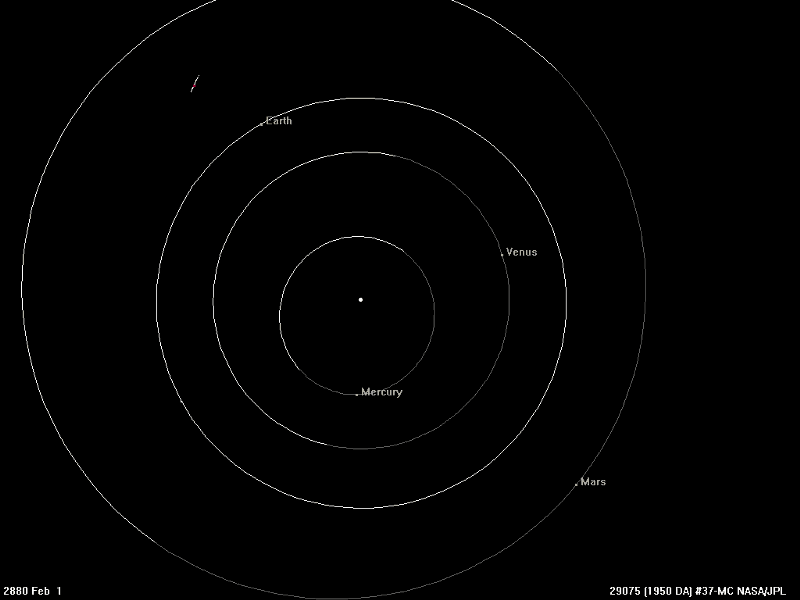
Imagine that the whole system - the Sun, the moon, all the planets, asteroids, comets, move with great speed at an angle of about 60 ° relative to the plane of the solar system. Something like this:
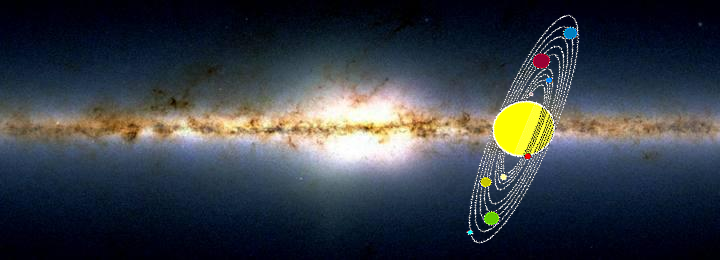
If we combine all this together, we will get a more accurate picture:

What about precession? And also about down-up and in-out oscillations? All this is true, but the video shows this in an overly exaggerated and incorrectly interpreted form.
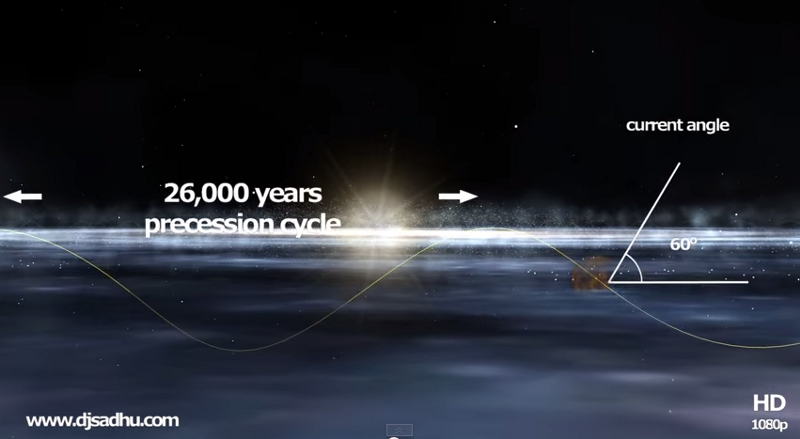
Indeed, the precession of the solar system occurs with a period of 26,000 years. But there is no spiral movement, neither in the Sun nor in the planets. Precession is carried out not by the orbits of the planets, but by the axis of rotation of the Earth.

The Polar Star is not constantly located directly above the North Pole. Most of the time we do not have a polar star. 3000 years ago, Cochab was closer to the pole than the Pole Star. After 5500 years, the polar star will be Alderamin. And after 12,000 years, Vega, the second brightest star in the Northern Hemisphere, will be only 2 degrees from the pole. But it is this that changes with frequency every 26,000 years, and not the movement of the Sun or the planets.
What about the solar wind?

This is radiation coming from the Sun (and all stars), and not something that we crash into, moving across the galaxy. Hot stars emit rapidly moving charged particles. The boundary of the solar system passes where the solar wind is no longer able to repel the interstellar medium. There is the boundary of the heliosphere.

Now about the up and down movements and in and out towards the galaxy.
Since the sun and the solar system are subject to gravity, it is it that dominates their movement. Now the Sun is located at a distance of 25-27 thousand light years from the center of the galaxy, and moves around it in an ellipse. In this case, all other stars, gas, dust, move through the galaxy also in ellipses. And the Sun's ellipse is different from all the others.
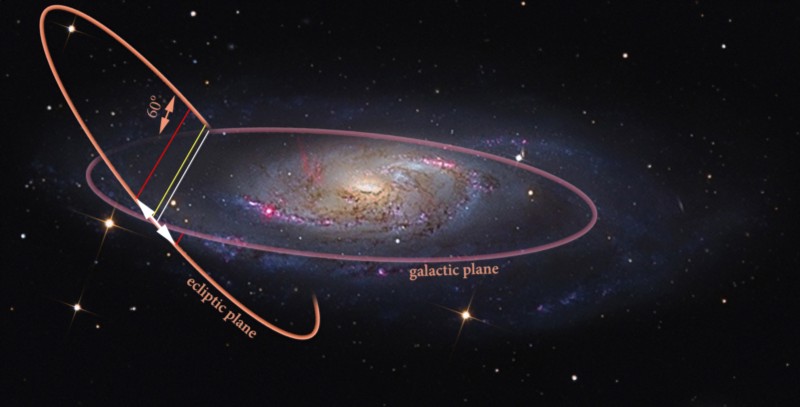
With a period of 220 million years, the Sun makes a complete revolution around the galaxy, passing slightly above and below the center of the galactic plane. But since all the rest of the matter of the galaxy moves in the same way, the orientation of the galactic plane changes with time. We can move along an ellipse, but the galaxy is a rotating plate, so we move up and down it with a period of 63 million years, although our movement in and out takes place with a period of 220 million years.
But the planet doesn’t make any "corkscrew", their movement is distorted beyond recognition, the video incorrectly tells about the precession and the solar wind, and the text is full of errors. The simulation is very beautiful, but it would be much more beautiful if it were correct.
Source: https://habr.com/ru/post/367065/
All Articles